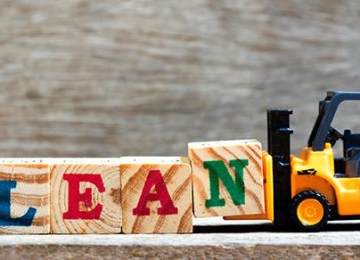Recent News & Blog / Lean Manufacturers: Reap the Benefits of Lean Accounting

May 31, 2019
Standard cost accounting doesn’t necessarily work for lean operations. Instead, lean accounting offers a simplified reporting alternative that generates more timely, relevant financial data. But it’s not right for every situation.
What's Lean Manufacturing?
Lean manufacturers strive for continuous improvement and elimination of non-value-added activities. Rather than scheduling workflow from one functional department to another, these manufacturers organize their facilities into cross-functional work groups or cells.
Lean manufacturing is a “pull-demand” system, where customer orders jumpstart the production process. Lean companies view inventory not as an asset but as a waste of cash flow and storage space.
Why Won't Traditional Accounting Methods Work?
From a benchmarking standpoint, liquidity and profitability ratios tend to decline when traditional cost accounting methods are applied to newly improved operations. For example, to minimize inventory, companies transitioning from mass production to lean production must initially deplete in-stock inventories before producing more units. They also must write off obsolete items. As they implement lean principles, many companies learn that their inventories were overvalued due to obsolete items and inaccurate overhead allocation rates (traditionally based on direct labor hours).
During the transition phase, several costs — such as deferred compensation and overhead expense — transition from the balance sheet to the income statement. Accordingly, lean manufacturers may initially report higher costs and, therefore, reduced profits on their income statements. In addition, their balance sheets initially show lower inventory.
Alone, these financial statement trends will likely raise a red flag among investors and lenders — and possibly lead to erroneous business decisions.
How Does Lean Accounting Work?
Standard cost accounting is time consuming and transaction-driven. To estimate cost of goods sold, standard cost accounting uses complex variance accounts, such as purchase price variances, labor efficiency variances and overhead spending variances.
In contrast, lean accounting is relatively simple and flexible. Rather than lumping costs into overhead, lean accounting methods trace costs directly to the manufacturer’s cost of goods sold, typically dividing them into four value stream categories:
- Materials costs,
- Procurement costs,
- Conversion costs, such as factory wages and benefits, equipment depreciation and repairs, supplies, and scrap, and
- Occupancy costs.
These are easier to understand and evaluate than the variances used in standard cost accounting. In addition, box score reports are often used in lean accounting to supplement profit and loss statements. These reports list performance measures that traditional financial statements neglect, such as scrap rates, inventory turns, on-time delivery rates, customer satisfaction scores and sales per employee.
Should Your Company Abandon Standard Cost Accounting?
Most companies are required to use standard cost accounting methods for formal reporting purposes to comply with U.S. Generally Accepted Accounting Principles (GAAP). But lean manufacturers may benefit from comparing traditional and lean financial statements. Such comparisons may even highlight areas to target with future lean improvement initiatives. Contact us for more information.